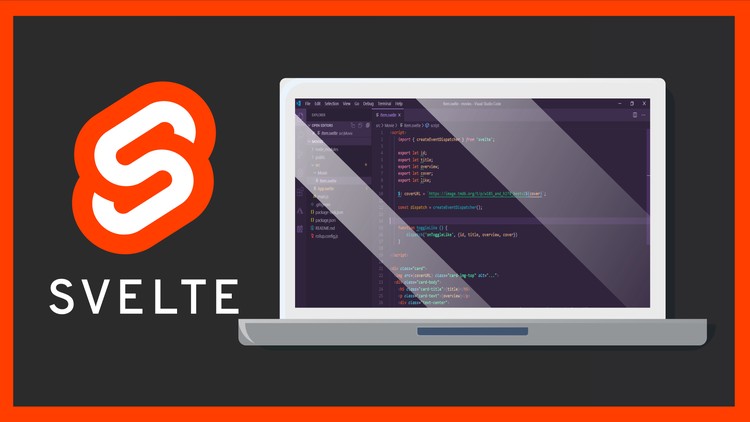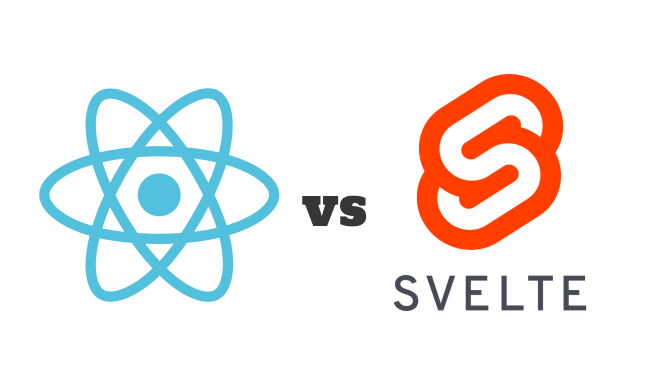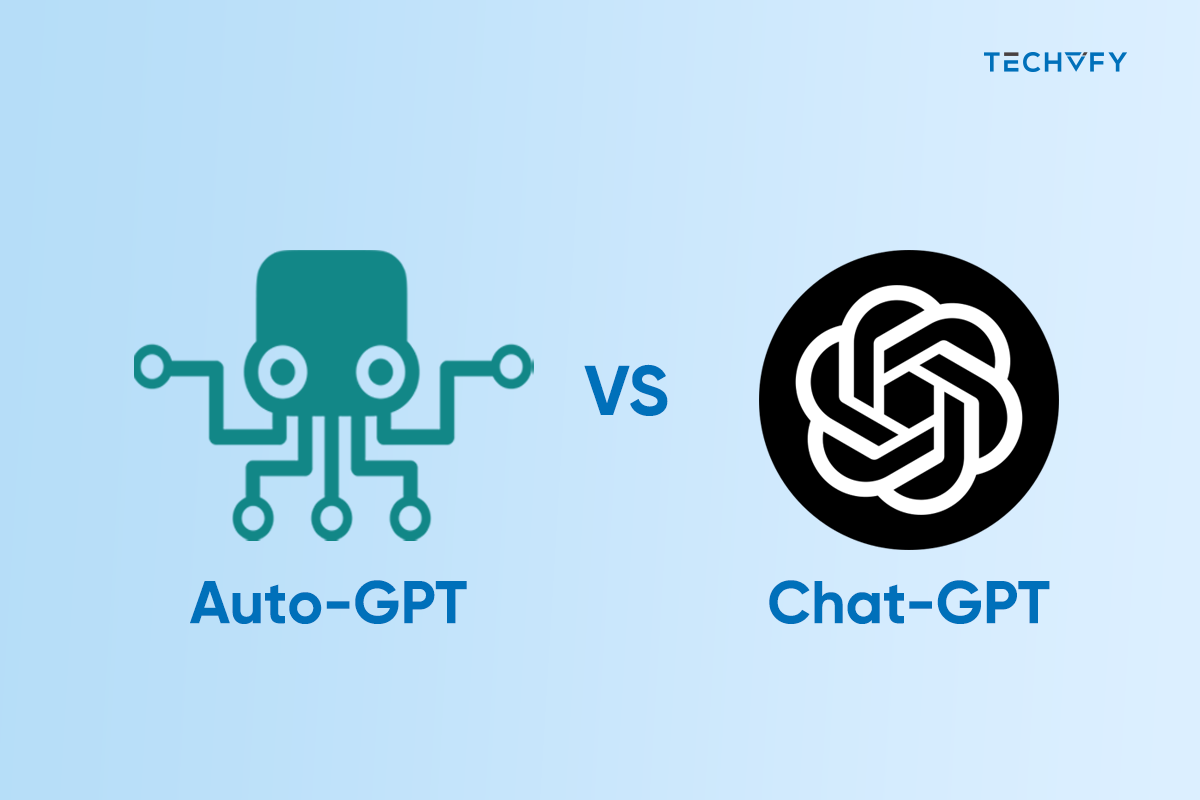Svelte vs React: A Full Comparison for 2025
- David Ho
- 0 Comments
In recent years, we’ve witnessed a flood of new JavaScript libraries and frameworks, each promising to tackle the challenges of creating quick and efficient user interfaces (UIs) while keeping the code light and boosting performance.
This steady stream of JavaScript tools has fueled an ongoing debate among developers and software engineers about which library or framework is the top pick for UI development.
This group includes React, VueJS, Angular, Svelte, Nue, Ember, among others.
In this article, I’ll dive into the showdown between Svelte vs React, examining the difference between Svelte and React, what Svelte is used for, and how it measures up to the React framework.
Understanding Svelte and React
What is Svelte?
Svelte is a platform that creates quick, adaptable, and technologically advanced web applications. It is known for being the “most loved JavaScript framework” and having the “most satisfied developers,” with over 60,000 stars on GitHub. Svelte creates applications and components using .svelte files. These files are HTML files with a templating syntax similar to JSX, making creating and managing dynamic content easier.
- Groundbreaking UI creation method.
- Compile step operations, not browser-based like traditional frameworks.
- Optimizes JavaScript at build time, eliminating runtime interpretation.
- Reduces performance drawbacks and initial load delays.
- Suitable for full app development or incremental integration.
- Components can be distributed as standalone packages, free from framework dependencies.

What is React?
React is an early web framework in the JavaScript world, and it is still the most used and liked today. It helps make interactive user interfaces simple and effective. React uses JSX to build applications and is supported by many libraries, making it a solid and trustworthy framework.
- JSX: React integrates rendering logic with UI logic using JSX, allowing markup and logic to coexist in a single .jsx file.
- Component-Based Architecture: React’s design revolves around self-managing components that facilitate building complex UIs through the composition of these components.
- Declarative Nature: React simplifies the creation of interactive UIs by automatically updating and rendering the right components when data changes.

Check out our newest Java-related articles:
Difference Between Svelte vs. React
Let’s compare all the aspects, from Svelte vs React popularity to Svelte vs React speed.
| Feature | Svelte | React |
|---|---|---|
| Popularity | Growing popularity, but less widespread than React. | The most popular web framework as of State of JavaScript 2021. |
| Scalability and Extensibility | Scalable and stable, with a smaller ecosystem compared to React. | Highly scalable and extensible, thanks to a vast ecosystem and community support. |
| Speed and Performance | Excels in performance due to compile-time optimizations and no use of Virtual DOM. | Fast, but relies on Virtual DOM, which is less efficient than Svelte’s approach. |
| Syntax and Learning Curve | Uses standard HTML, CSS, and JavaScript, making learning easier and more readable. | Utilizes JSX, which can be complex for beginners, leading to a steeper learning curve. |
| Library Size | Extremely lightweight with a minified and GZipped version of only 1.7 KB. | Larger, with a combined size of 44.5 KB minified and GZipped for React and ReactDOM. |
| Ecosystem and Documentation | Smaller ecosystem but excellent documentation with interactive tutorials. | Larger ecosystem with more resources but comparatively poorer documentation (improvements are underway). |
| Employment Opportunities | Growing, but fewer opportunities compared to React. | High demand and numerous job opportunities due to its popularity and usage. |
| Dynamic Styling | Supports dynamic styling with styles in separate <style> blocks. | Supports inline styling through JSX, offering a different approach to dynamic styling. |
Have a Project Idea in Mind?
Get in touch with experts for a free consultation. We’ll help you decide on next steps, explain how the development process is organized, and provide you with a free project estimate.
Pros and Cons of Svelte vs React
Pros of Svelte
- No Virtual DOM: Svelte works as a compiler, removing the need for a Virtual DOM. It identifies possible changes in your app before it runs, offering a clear advantage over other web frameworks.
- Less Code Needed: Svelte aims to reduce the amount of code developers must write. It simplifies building user interfaces by streamlining reactivity, bindings, and handling top-level elements, making the code easier to read.
- Automatic Reactivity: Svelte is naturally reactive. You don’t need extra code to make your app responsive; every variable is automatically reactive. It also allows for automatic updates and reactive statements that adjust when the state changes.
- Easy to Learn: Svelte combines standard HTML, CSS, and JavaScript/TypeScript, avoiding the need to learn new concepts or syntax like JSX. Its documentation is clear and includes a comprehensive tutorial.
Cons of Svelte
- Smaller Ecosystem: As a newer framework, Svelte has a smaller ecosystem than older frameworks like React. This results in fewer libraries and tools available for Svelte.
- Unique Approach: While Svelte uses familiar languages like HTML, CSS, and JavaScript/TypeScript, it introduces unique features that differ from other frameworks. If you’re familiar with JSX, you might find Svelte’s different approach, such as its use of the export keyword and on:click syntax, a bit unusual.
Pros of React
- Reusable Code: React is designed around components, many of which can be reused and customized for different needs with props, making development more straightforward.
- Better SEO: Search engines typically struggle with JavaScript-heavy sites. React solves this by allowing apps to be executed on the server, where the virtual DOM is processed and sent to the browser as a standard webpage, improving search engine visibility.
- Broad Ecosystem: As one of the older web frameworks, React has a wide ecosystem. This means there’s a wealth of resources and support available for React developers.
- Abundant Libraries: With its vast ecosystem, the community creates a large number of tools and libraries, which are frequently used by millions of React developers.
Cons of React
- Challenging Learning Curve: React’s adoption of JSX—a syntax extension—can be daunting, particularly for those new to it. Its distinct approach may discourage developers due to its complexity.
- Library Constraints: React lacks out-of-the-box features and tools as a library rather than a full framework. This can lead to security and consistency issues, forcing developers to depend on third-party libraries for full functionality.
- Limited Documentation: Regular updates in the React ecosystem can make the documentation hard to follow, posing a challenge for beginners trying to learn React.
Which Is Better, Svelte vs React 2025?
Choosing between Svelte and React for your projects, especially when considering svelte vs react 2025 discussion, comes down to a few key points. React, known for its wide-ranging ecosystem and strong tools, is a top pick for big projects. It’s especially good when you need a well-established framework with many features. React’s way of handling updates through a virtual DOM makes it reliable for complex interfaces.

Svelte, acclaimed for why Svelte is better than React, works by compiling your code, leading to a simpler codebase without needing a virtual DOM. This makes development faster and reduces the size of the final code, which is great for projects where speed and keeping the code easy to manage are important.
The right choice depends on your project’s needs. React is flexible, fitting a variety of projects like video streaming, social media, and online stores. With its easy-to-learn nature and efficient code, Svelte shines in projects where quick performance, speed, and maintenance are key, making it an excellent option for JAMstack sites and dashboards.
Conclusion
You’ve gained insights into the key distinctions between the React library and the Svelte compiler, including their performance variances and approaches to using or not using the virtual DOM. React employs a syntax known as JSX, which resembles HTML, while Svelte relies on straightforward HTML, CSS, and JavaScript.
If you need expert advice or professional web development services to bring your project to life, TECHVIFY is here to assist. Our experienced developers are skilled in both Svelte and React and ready to deliver customized solutions that match your project’s requirements. Reach out to TECHVIFY today for premier web development services that harness the best of modern technology.
TECHVIFY – Global AI & Software Solution Company
From Startups to Industry Leaders: TECHVIFY prioritizes results, not just deliverables. Accelerate your time to market and see ROI early with high-performing teams, AI (including GenAI) Software Solutions, and ODC (Offshore Development Center) services.
- Email: [email protected]
- Phone: (+84)24.77762.666
FAQs
Is Svelte better than React
Yes! Svelte creates much smaller bundles than React, which means it loads faster.
Svelte vs React performance
Svelte generally offers better performance than React due to its smaller bundle sizes and direct DOM updates, leading to faster initial load times and potentially more efficient runtime updates
Why Svelte is better than React
Svelte sets itself apart from React by converting declarative components into streamlined JavaScript, leading to better speed, smaller files, and less extra code.





